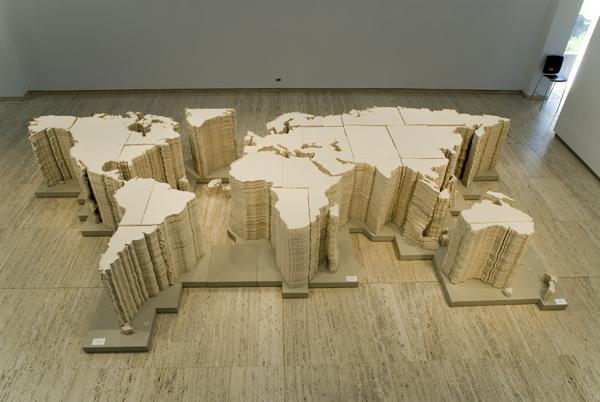POST ONE - SCRAP
SCRAP entailed a three week generative studio, taken by MATERIALBYPRODUCT. In this studio we were asked to:
“generate thought and propositions for new ways of dealing with the inevitable waste in the garment making process...Consider the entire length of cloth and cutting ‘both sides of the scissors’ for the invention of new form...[create a series of forms and associated ideas for the transformation of ‘scrap’... re-think of the long term and initiate design supported by asystematic approach for the elimination of scrap currently known.”
What is scrap. Mainly it is a consideration of value in something. Something that looked at as waste, having no use, no longer relevant as a decision of worth. I am concentration on the scrap of the FABRIC and PATTERN CARD.




LEFT OVER FABIRC
- how can I create pattern cutting in a clean way in which everything is useable.
- Negatives and Positives have the same level of use in a system of cutting. All cut pieces become integrated by the creating of a SLIT SLIP method of production.
- Taking reference from flat pacs, an internal slit means fabrics can be slipped into one another and fused or sewn together to create a wearable construction.
LEFT OVER PATTERN CARD
- Usually in a commercial level of garment production, the pattern card of one style, or multiples of this card depending on how big the company is, will be used as a template to cut garment peices. They are then discarded with one being archived. Thier archiving includies being stacked up together, placed on a pattern hook and occupying some small space on a rack somewhere in a studio
- How can the Pattern Card become a by product, where in folling the seam slit/slip method of construction as its fabirc permutation (garments) becomes a phenomenal sculpture.
- As a sculpture it may both, reveal process, and create a new experience of worn space by challenging assumed documentation of form.
OUTCOME
A flat pac documentation of a pattern and garment making process. Intended to be used as information resulting in two permutations of the one form.
- Pattern cards are used to trace of fabric pieces and the construction method to make a garment
- And then use the pattern card themselves and construction method to create a sculptural form.
THINGS taken from Scrap
In thinking about things developed in Scrap which I would like to carry over into pre major project a few major concerns and techniques stand out.
I want to further explore the use of pattern card and ability to have a second-use as something else. This could be something between fashion, architecture, art and product. How can you further explore the template of a garment, perhaps off the body, how can you have a further experience of the space you take up in a form of walls? I think the way we document a space in card-board through the pattern could be challenged. Why do we approach it in the way we do and what other ways could the looked at?
I like the ‘slit/slip’ technique. I like the way in which it in a way eliminates seams, in that the over edge is extended and possible inside/outside fillings and hollows of garments become increased. How can this way of construction become more resolved in applying to garments and a form, how can it be more dynamic in what it creates. Also how can it be refined as a process that is applied to any garment, style, object of form. Maybe also, how can it be used to create more of an environment?
MBP have always had a major interest in positive/negative of the garment in pattern cutting and wearing of form. I like this in how we experience a garment. Want to take an element of this notion into what I produce, and further how it gives the viewer/wearer an understanding of how they experience inside and outside.









No comments:
Post a Comment